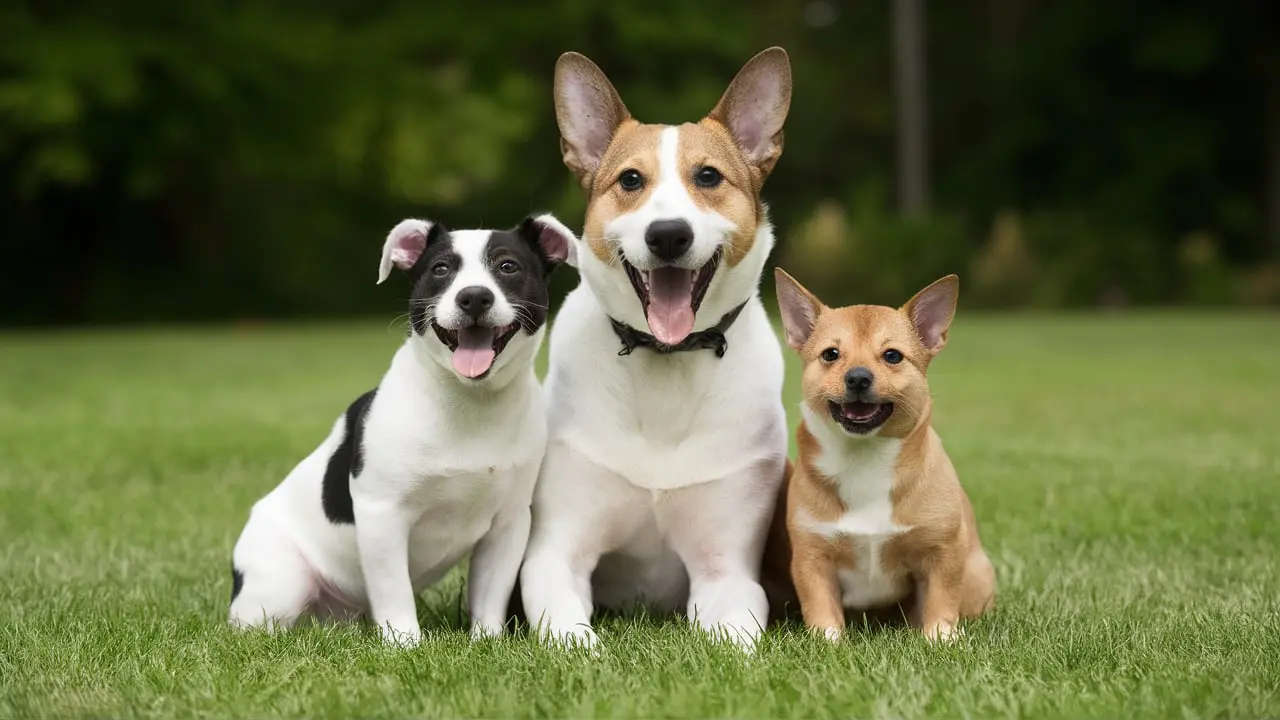Understanding Your Pet’s Needs
The Basics of Pet Nutrition
Proper nutrition is fundamental to your pet’s overall health and well-being pethardas com.
Understanding the different types of pet food can help you make the best choices.
Types of Pet: Dry, Wet, and Raw
- Dry Food: Convenient and helps keep teeth clean. Look for high-quality brands with good protein sources.
- Wet Food: Often more palatable and can help with hydration, but don’t rely solely on it, as it may lead to dental issues.
- Raw Food: A debated option, it mimics what pets would naturally eat. Consult with a vet to ensure a balanced diet.
Importance of a Balanced Diet
A well-balanced diet supports a healthy coat, energy levels, and overall vitality.
Consult your vet for specific dietary recommendations based on your pet’s age, weight, and health status.
Reading Pet Food Labels
Understanding labels helps identify quality ingredients www pethardas com.
Look for real meat sources at the top of the ingredient list and avoid foods with artificial additives.
Grooming Essentials for Various Pets
Regular grooming is vital for your pet’s hygiene and comfort.
Grooming Tools and Their Uses
- Brushes: Different brushes suit various fur types; find one that’s right for your pet.
- Nail Clippers: Keep your pet’s nails trimmed to prevent discomfort.
- Ear Cleaners: Regular checks and cleaning can prevent infections.
Bathing Techniques for Different Animals
Bathing frequency varies by species.
Generally, dogs may need a bath every few months, while cats often groom themselves but can benefit from occasional help.
Use pet-friendly shampoos to avoid skin irritation.
Maintaining Dental Health
Dental health is often overlooked. Regular brushing, dental chews, and vet check-ups can prevent periodontal disease.
Every effort counts when it comes to your pet’s mouth!
Importance of Regular Veterinary Care: pethardas com
Routine veterinary visits can help catch potential health issues early.
Routine Check-Ups and Vaccinations
Regular check-ups ensure your pet is healthy and up-to-date on vaccinations.
Discuss a vaccination schedule with your vet to protect against diseases.
Common Health Issues and Prevention
Being aware of common health problems, like obesity and parasites, can help you take preventive measures.
Keep an eye out for weight gain and ask your vet about parasite prevention products.
Emergency Care Guidelines
Know basic first-aid for pets. Keep your vet’s emergency contact number handy, and consider training for pet CPR.
Creating a Safe and Comfortable Environment
Designing a Pet-Friendly Home
Creating a welcoming environment for your pets starts at home.
Safe Spaces for Pets: Zones and Boundaries
Designate specific areas for your pets to relax and play.
A cozy spot with their bed and favorite toys is ideal.
Pet-Proofing Your Home: Hazards to Avoid
Store hazardous items securely, like cleaning supplies and electrical cords.
Keeping small objects out of reach prevents choking hazards.
Essential Supplies for Comfort
Basic supplies include a comfortable bed, food and water dishes, and safe toys.
A secure crate can also provide a safe space for your pet.
Outdoor Safety and Exploration
Outdoor adventures can be rewarding but require safety precautions.
Safe Outdoor Spaces: Fenced-in vs. Open Areas
Fenced-in yards offer safety for pets to roam.
If in open areas, keep a watchful eye and use leashes to prevent escapes.
Leashing and Harnessing Techniques
Choose the right harness for your pet’s size and breed. Training them to walk politely on a leash makes outings more enjoyable.
Training Your Pet for Outdoor Adventures
Condition your pet for outdoor experiences gradually.
Start with short walks and gradually explore new environments.
Seasonal Considerations for Pet Care
Understanding seasonal changes can help keep your pet safe and healthy.
Winter Care Tips: Keeping Pets Warm
During cold months, keep pets inside as much as possible, and consider dog coats for short-haired breeds. Check their paws for ice or salt buildup after walks.
Summer Safety: Heat and Hydration
Hot weather demands extra care; provide plenty of water and avoid walks during the hottest part of the day. Overheating can be serious for pets.
Spring and Fall: Allergies and Seasonal Changes
Watch for signs of allergies, like itching or sneezing. Bathing your pet more frequently can help reduce allergens caught in their fur.
Training and Behavioral Management
Basic Training Techniques pethardas com
Training is essential for a well-behaved pet.
Positive Reinforcement Methods
Use treats and praise to encourage good behavior.
Positive reinforcement builds trust and makes training more effective.
Common Commands Every Pet Should Know
Basic commands like “sit,” “stay,” and “come” improve safety and communication.
Practice these commands regularly.
Training Tools and Their Effectiveness
Consider clickers or training pads to assist your training efforts. But remember, consistency is key!
Understanding Pet Behavior
Understanding behavior can improve your pet’s quality of life.
Recognizing Stress and Anxiety in Pets
Watch for changes in behavior, such as hiding or excessive barking.
If you notice signs of stress, consult with a vet on how to help your pet feel more secure.
Interpretation of Body Language
Pets communicate through body language.
A wagging tail generally means a happy dog, while a cat’s flicking tail can signal irritation.
Behavioral Red Flags and Solutions
Aggression, destructive behavior, or excessive barking can indicate underlying issues.
Don’t hesitate to seek professional help if needed.
Socialization Strategies
Socializing your pet is crucial for their mental and emotional health.
Importance of Socializing Pets
Regular interaction with other animals and people helps pets develop healthy behaviors.
It makes them more adaptable to new situations.
Introducing Pets to New Environments
Take it slow when introducing your pet to new settings. Familiarize them with the environment gradually to reduce anxiety.
Managing Interactions with Other Animals
Supervise introductions with other animals to ensure safe and positive interactions.
Using neutral territory for the first meet can lessen territorial behaviors.
Enriching Your Pet’s Life
Importance of Playtime and Exercise
Play and exercise contribute significantly to a pet’s happiness.
Identifying Your Pet’s Activity Needs
Different breeds have different activity levels. Research your pet’s breed to know their typical exercise requirements.
Types of Play: Solo vs. Interactive
Both types are important. Solo play with toys can keep pets occupied, while interactive play builds bonding and improves behavior.
Exercise Routines for Different Breeds
Active breeds may require more vigorous exercise, while others thrive with shorter, gentler walks. Tailor routines to meet your pet’s needs.
Mental Stimulation Activities
Keeping your pet’s mind active is just as crucial as physical exercise.
Puzzle Toys and Their Benefits
Puzzle toys can engage your pet’s brain and keep boredom at bay. They challenge pets and can slow down eating if they dispense food.
Training Games to Keep Minds Sharp
Incorporate training games into playtime—these stimulate your pet’s thinking while reinforcing good behavior.
Social Interaction: Arranging Playdates
Setting up playdates with fellow pet owners helps promote social skills and provides fun opportunities for play.
The Role of Routine in Pet Happiness
Routine is a source of comfort for pets.
Establishing Consistent Feeding and Walking Times
Regular schedules help pets feel secure and know what to expect. Try to stick to a daily feeding and walking routine.
Importance of Predictability for Pets
Predictability reduces anxiety for pets. Sudden changes in their environment can be stressful; a stable routine helps mitigate this.
Adapting Routines During Travel or Emergencies
When traveling, maintaining some aspects of routine, like feeding times, can comfort pets. Prepare in advance to help ease transitions www pethardas com.
Understanding Pets Across Different Species
Dogs: Unique Care Considerations
Dogs require specific care based on breed and type.
Breed-Specific Needs and Characteristics
Some dog breeds are more active than others.
Researching your dog’s breed characteristics helps tailor care to their needs.
Health Issues Common in Dogs
Watch for breed-related health concerns, from hip dysplasia in larger breeds to dental issues in smaller ones.
Training Styles and Their Effectiveness
Different breeds respond better to certain training styles pethardas com.
Consult with a trainer for breed-specific techniques.
Cats: Independent Yet Affectionate
Cats are unique in their independence but still need care and attention.
Understanding Feline Independence
Cats often entertain themselves but still need social interaction.
Engaging with them through playtime promotes bonding.
Health Care Needs Specific to Cats
Regular vet visits and indoor safety are crucial.
Cats are prone to certain health issues, like obesity and dental problems.
Enrichment Strategies for Indoor Cats
Create a stimulating environment with scratching posts, climbing trees, and interactive toys to keep your cat occupied and satisfied.
Other Popular Pets: pethardas com
Each pet type requires a tailored approach to care.
Care Tips for Small Animals (Rabbits, Guinea Pigs)
These pets need space to exercise and socialize.
A balanced diet and regular cleaning of their habitat are essential.
Fish Care Basics: Tanks and Maintenance
Maintain a proper tank environment with the right equipment and regular water changes. Research the needs of specific fish species for their health.
Birds: Habitat and Social Needs
Provide a spacious cage, toys, and social interaction. Birds are social creatures that thrive on engagement with their owners.
Conclusion
A well-maintained pet means a happy pet pethardas com.
Understanding their nutritional, grooming, and healthcare needs, creating safe spaces, engaging in training, and providing enrichment activities contribute to a fulfilling life for your pets.
Being a responsible pet owner is a long-term commitment, but the love and joy they bring into your life make it incredibly rewarding pethardas com.
FAQs
How do I choose the right food for my pet?
Consider your pet’s age, breed, and any health issues. Consulting with a vet can help narrow down the best options.
What are the signs my pet needs to see a vet?
Look for changes in behavior, appetite, or energy levels. Physical signs like vomiting or limping should also prompt a vet visit.
How can I help my pet adjust to a new environment?
Introduce them gradually to new spaces and routines. Familiar items like their bed or toys can help them feel more secure.
What are effective ways to train a stubborn pet?
Patience is key! Utilize positive reinforcement and break training into smaller steps. Consistency in training practices will yield results over time.
How do I keep my pet safe during holidays or gatherings?
Ensure your pet has a quiet space away from crowds and avoid feeding them table scraps. ID tags and microchips are essential in case they get lost.

